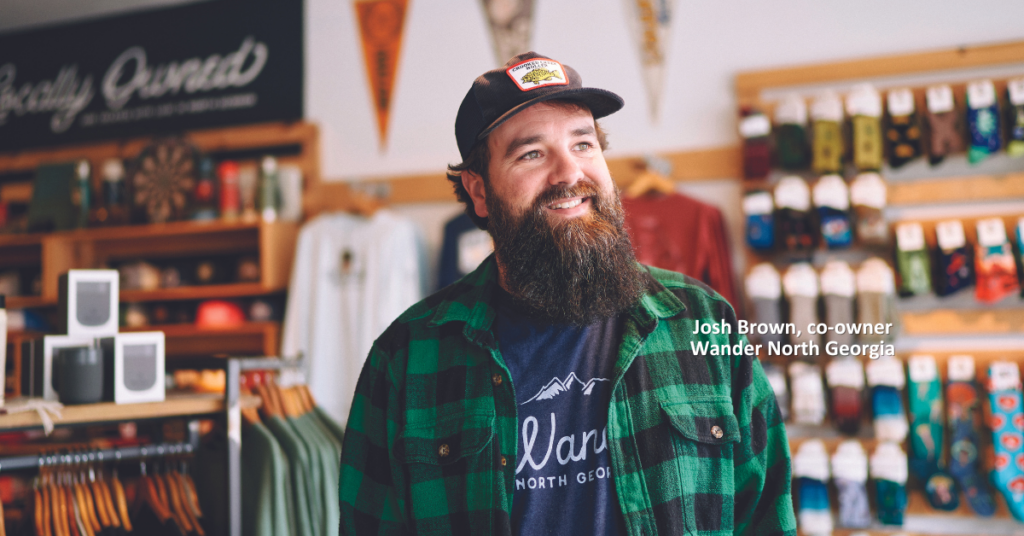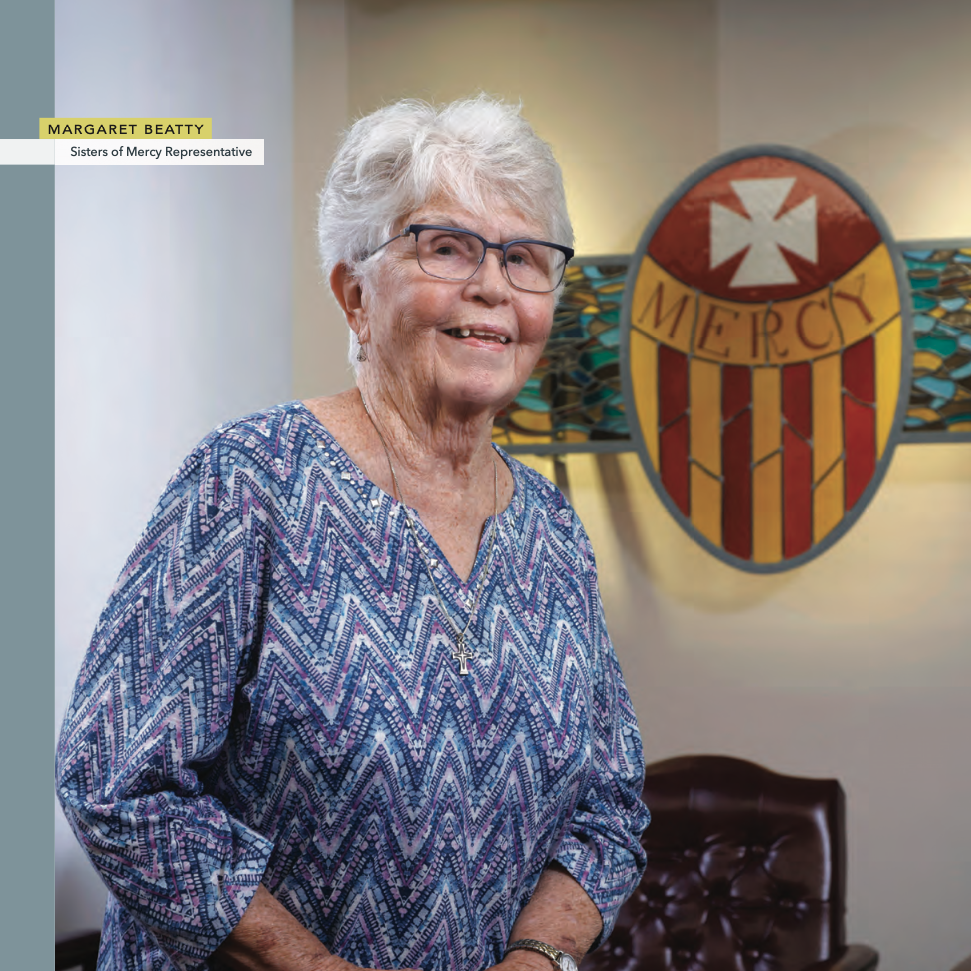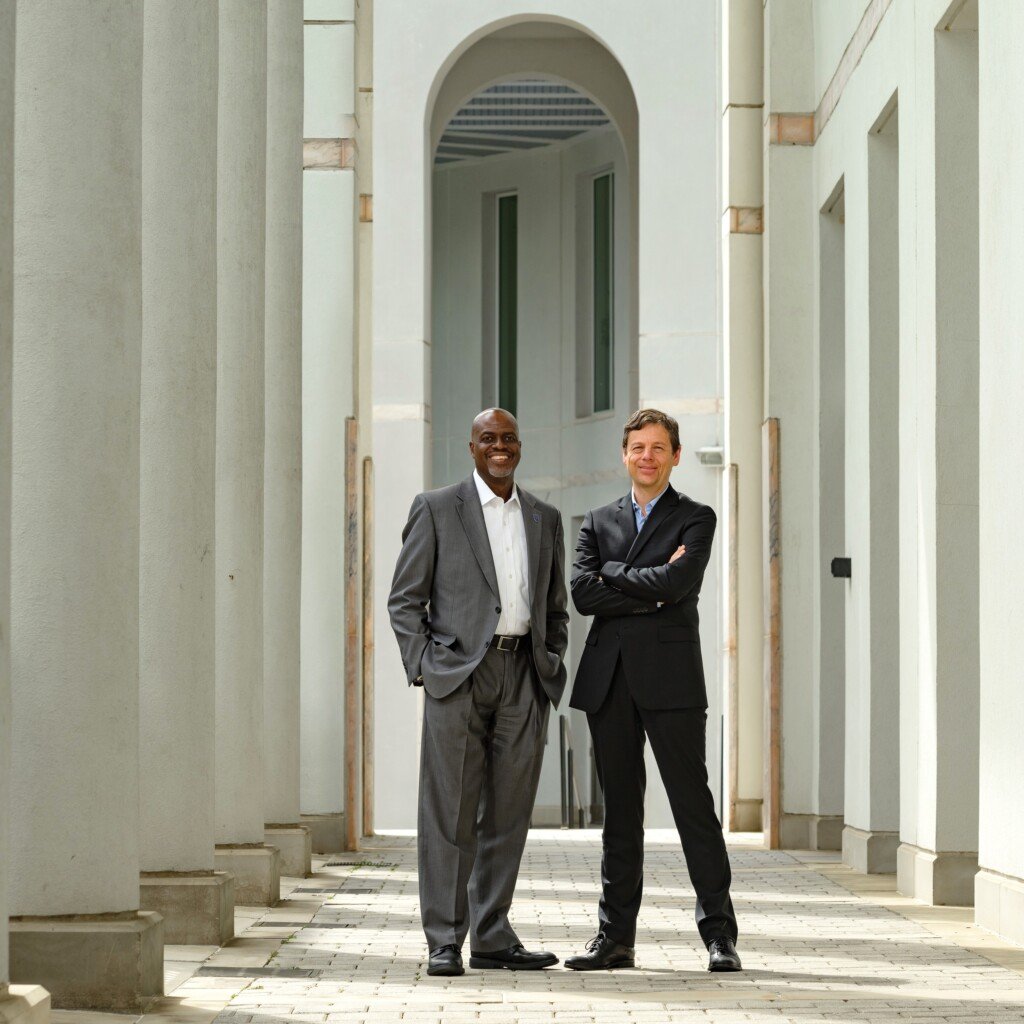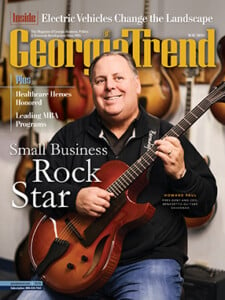2023 Travelblazers
Five destinations around Georgia where visitors can experience everything from a kayak ride to holiday lights.
A newly branded beer in College Park. A re-created farmhouse turned into a visual arts gallery in Woodstock. A Christmas lights spectacular in Macon. A kayak vending machine in Gainesville. A farmers market beautiful enough to hold wedding receptions in Statesboro.
These projects span the state, but they share a few characteristics: They are destinations for their communities and for visitors. They all involve collaboration with partners. And as creative, non-traditional initiatives that contribute to local tourism assets and attractions, they are the recipients of the 2023 TravelBlazers awards, chosen by the Georgia Association of Convention & Visitors Bureaus (GACVB) and Georgia Trend.
Jay Markwalter, executive director of the GACVB, points out that although the awards recognize tourism efforts, the 2023 TravelBlazers deliver unique opportunities for both visitors and residents. “They show what creative local partnerships can offer to visitors and locals,” he says. “Visitors love what locals think is cool. We’re seeing a lot of these projects that are being done almost for the communities, but it’s such a great asset for visitors to enjoy.”
Self-serve Kayaks: Lake Lanier, Gainsville

Great Location: Gnarly Marsh co-founders Brant Cook, left, and Chuck Alsdurf at the Kayak Shack; photo contributed.
Gainesville Parks and Recreation Director Kate Mattison had an idea about how to better connect visitors and residents to Lake Lanier. The lake draws about 12 million visitors a year, and Gainesville boasts five public parks on the lake. “But we don’t have great accessibility,” says Mattison, especially for novice boaters who might be staying at a hotel for a conference and just want to get out on the water for a bit.
Her idea was as pithy and compelling as a Hollywood pitch: A kayak vending machine. Parks and Rec partnered with Gnarly Marsh, a startup with the same idea born when the company’s founders were attending business school together. In May of last year, the Kayak Shack made its debut in Gainesville’s Longwood Park. The self-service shack works a bit like renting an electric scooter (except you have to return the kayak to the shack when you’re done). Kayakers download the LINKA GO app, set up their account and pay the rental fee ($20 for the first hour and $5 per ¼ hour after that, or frequent renters can buy memberships), and get a code to unlock one of the 10 stalls. Inside are a kayak, paddle, dry bags, adult life jackets and a place to store towels and keys. The kayak also converts to a paddleboard.
This was a pilot project for both Gainesville and Gnarly Marsh, and Mattison says there was a lot to work through – everything from figuring out a sublease from the U.S. Army Corps of Engineers, from which Gainesville leases its parks on the lake, to what materials would be used to build the shack. And there were some rookie moves, like initially asking for email but not a phone number. That proved an issue when Parks and Rec needed to call and see why someone was running late returning their rental.
Gnarly Marsh co-founder Chuck Alsdurf says business was good last year and echoes Mattison’s comments about learning how to make it even better – for one thing, he plans to build the next version of something more lightweight than wood. “We’re looking for locations that are similar [for the next Kayak Shack], that have a lot of foot traffic and that are easily accessible,” he says.
He may not have long to wait. “It’s such a great amenity for us,” Mattison says. “Every time I tell someone about it, they say, ‘Wait, I want one!’”
From Dowdy to Destination: Downtown Statesboro
The Statesboro Convention and Visitors Bureau, AKA Visit Statesboro, is no stranger to being a pioneer. In 2014, the organization joined the effort to revive downtown’s Blue Mile corridor that runs along South Main Street from the entrance of Georgia Southern University to the courthouse. Visit Statesboro renovated an old building and moved in, then turned an eye toward an old warehouse that would undergo an ugly-duckling-to-swan transformation into a spacious, light-filled home for the city’s farmers market that could also host parties and receptions.
But first, there was the clean-out. The warehouse was filled “floor to ceiling” with old hotel furnishings, says Visit Statesboro President and CEO Becky Davis. “Hotel furniture, mattresses – there would be 85 [copies] of the same framed photo,” she says. “It was so packed that when we first got in, one person could walk single file about halfway in.” After donating some items to Habitat for Humanity ReStore and having an open giveaway day, remodeling started, and the dowdy warehouse became a destination.
The Main Street Farmers Market was already an established draw for downtown, but it was at the mercy of the elements in an open asphalt lot. “If it rained, everything shut down,” Davis says. Now visitors – many of whom come to see the namesake city from Blind Willie McTell’s famous “Statesboro Blues” – and residents can shop in comfort in a 7,000-square-foot space that features roll-up glass windows, restrooms, a catering kitchen, bar, walk-in fridge and freezer, office space and (most important in a South Georgia summer) air conditioning. This is the market’s second year in the new space, and Davis says opening day in April set a record for sales.

Becky Davis, Visit Statesboro CEO walking the boardwalk with Visit Statesboro Vice President Justin Samples; photo Frank Fortune.
In February of this year, a boardwalk and bridge connecting the Willie McTell Trail to the market opened. The surrounding greenspace was donated by the Downtown Development Authority and the city helped with funding and incentives, making it even easier for walkers and bike riders to get to the market.
“We’ve already hosted weddings, receptions, rehearsal dinners, church events, community events,” Davis says. “Georgia Southern parents and students love it. There’s nothing else like it in downtown Statesboro.”
Recreating the Reeves House: Downtown Woodstock
Anyone who’s watched a home renovation show knows: You’re never really sure what’s going to happen to your careful plans once the sledgehammers start swinging. In the case of the Reeves House, built in 1897 – the same year Woodstock became a city – things got a lot more complicated.
The historic home, fallen into disrepair, was to be renovated for Woodstock Arts, a multidisciplinary nonprofit arts group that offers music, theater and visual arts. But despite initial encouraging reports from engineers, when the project actually got started the house was in such bad shape that it couldn’t be saved. Solution: Build a new Reeves House, on the same footprint as the original and with a replica of the façade, but with open space inside for a visual arts gallery, classroom, artist studio and coffee shop/wine bar.
Thanks to a partnership between the city, Woodstock Downtown Development Authority, Woodstock Arts, and Atlanta homebuilder (and art collector) John Wieland’s JW Collection, the reimagined Reeves House opened in May 2021 with an exhibit appropriately titled “[Re]constructing Home.”
“The façade is very similar, with a modern touch,” says Christopher Brazelton, Woodstock Arts executive director. “It was a long journey, but what’s nice [about] being on the other end is that we can use the building now to serve the community better than we could [with the old house].”
Behind Woodstock Arts is the idea that “you shouldn’t have to drive into the center of Atlanta to have access [to the arts],” Brazelton says. Complementing the existing theater and concert series, the Reeves House has hosted works by artists as far away as other countries and as close by as 15 miles. Literally. For the annual show titled “Small Town Small Works,” artists have to live within 15 miles of the Reeves House and their artworks on display have to be 15 inches or smaller.
Having a space for the arts is crucial to a healthy community, Brazelton says. “It contributes to the overall vibrancy of the community,” he says. “But I think it also adds to the sense of place – you know, strong communities over the course of history have had strong cultures with them.” Engaging with the arts, he believes, helps people understand each other, which translates into the community’s ability to work together to achieve its goals.
Team Spirit: South Metro Atlanta
In 2020, the WNBA team the Atlanta Dream moved to Gateway Center Arena @ College Park, a sports and entertainment venue in South Metro Atlanta. That was the spark for a unique collaboration between the ATL Airport District, the CVB for the cities of College Park, Hapeville and Union City, and local craft brewery Arches Brewing that resulted in the first custom beer in the WNBA league – the fittingly named Dream Empire.
If you wanted a cold one, you had to go to a game – or at least to the handful of restaurants that are among the new eateries making the South Metro a hot dining spot. That’s because the classic Vienna lager was only sold in the area (including at Arches Brewing, of course) – and for a limited time. “We wanted to make it an exclusivity thing – the only place you can get the beer is at Atlanta Dream games,” says Andria Towne, vice president of marketing and technology at ATL Airport District, who first raised the idea of a custom beer with one of the Arches owners a few years ago. The brewery and the CVB had worked together on a couple of events, and this seemed like the perfect match.
“We wanted [the beer] to be a commemorative thing for fans,” Towne says. A pre-season launch party for season ticket holders also featured several players in attendance, and lots of media – exactly what the team and the ATL District were aiming for. “It was a local, specialized experience and a lot of fun,” says Towne.

Community Pride: Andria Towne, vice president of marketing and technology at ATL Airport District, at Gateway Center Arena @ College Park; photo Kevin Garrett.
In fact, it was an initiative that hit a number of objectives for the district: Revving up excitement for the Dream’s season, drawing attention to a diverse group of local restaurants, bars and breweries, and showing off the district’s chops in developing creative ideas for tourism.
“We’re not trying to become the next Bud Light,” says Towne. “It’s designed to be a point of community pride and a point of pride for the team, for us as an area.” By that measure it was a resounding success, she says. And a hit with fans, as well, who got to drink a great-tasting beer that’s branded with their favorite team. Although the specially branded beer is no longer available, the ATL Airport District hopes the collaboration has created a blueprint that other teams may want to pursue with their own hometowns.
Lights in the Heart of Georgia: Downtown Macon
When it comes to Christmas, Macon gets started in July. That’s when Visit Macon, the city’s CVB, starts marketing the city’s annual Downtown Christmas Lights Extravaganza, which runs from the day after Thanksgiving to the first Sunday in January. But entrepreneur, downtown developer and coffee shop owner Bryan Nichols, who started the lights display in 2017, would tell you it never really stops.
Nichols was pondering how to get residents downtown to see how it had been revitalized – and how to attract more tourists, too. He thought people would “drive from all over the place” to see Christmas lights.
It began as a self-funded labor of love. His mother even helped him crisscross the state to buy lights at almost every Lowe’s they could find, with some forays into adjoining states, as well. Initially, Nichols relied on his audiovisual knowledge, called in some favors from folks in the construction industry, and seized the opportunity when the conductor of the Macon Pops came into the coffee shop to ask if the group would provide music. He and a few volunteers put up all the lights and, says Nichols, waited to see if it would work.
“I saw the show for the first time when everybody else did,” he says. “I was standing by the [Christmas lights] controller with my fingers crossed, hoping nothing went wrong.” Nothing did, and more than 250,000 people saw the lights that first year, according to Nichols.
That was then. Now, bolstered by grants and sponsors and promoted on billboards, social media, the Atlanta Journal-Constitution and Georgia Public Broadcasting, the lights drew 790,000 visitors to downtown Macon in 2022, says Visit Macon President and CEO Gary Wheat. Almost 96,000 of them came from more than 50 miles away, and some 27% of those came from out of state.
Although Nichols says he “quit counting” a few years ago, he knows that more than a million lights sparkle downtown during the holiday season. The family-friendly event is free and runs seven days a week, rain or shine, with Santa and reindeer making appearances and an opening night concert syncing the lights with the entire Pops orchestra.
“It’s gone from me not having a clue what I’m doing, to two city blocks [of lights], then four, then five,” Nichols says. “It has just exploded over the last five years. I expected people to come and see it. But I did not expect it to be what it is today.”












